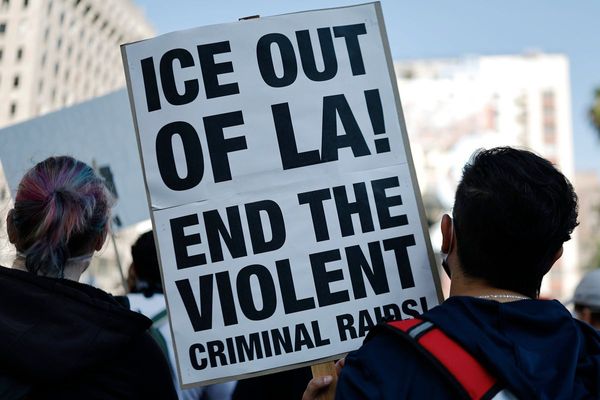
The Sydney Jewish Museum will lead an independent review into whether Lithuanian immigrant and celebrated Wollongong resident worked for the Nazi intelligence apparatus during the second world war and possibly carried out war crimes.
Bronius “Bob” Sredersas was a folk hero and former steelworker who has been a well-known figure since he donated his art collection to the Wollongong Art Gallery in 1976.
Guardian Australia reported how a four-year investigation by former local councillor Michael Samaras revealed documents that appeared to show Sredersas, who died in 1982, worked with the intelligence service of the Waffen-SS, known as the Sicherheitsdienst (SD).
Later Sredersas fled to Germany ahead of the advance by the Soviet Union where he applied for German citizenship and attempted to join the SS as a volunteer before he emigrated to Australia after the war.
Wollongong lord mayor Gordon Bradbery and the council’s general manager, Greg Doyle, met with representatives from the New South Wales Jewish Board of Deputies and the Sydney Jewish Museum on Thursday.
Wollongong council asked for assistance verifying the claims made about Sredersas’ past and engaged Sydney Jewish Museum historian, Prof Konrad Kwiet to carry out the review.
Kwiet is a Dutch Holocaust survivor who served as the chief historical consultant in the specialist investigations unit that worked within the commonwealth Attorney General’s Department between 1987 and 1994 to investigate Nazi war criminals in Australia.
NSW Jewish Board of Deputies CEO Darren Bark said the meeting showed Wollongong council were “taking the issue seriously”.
“There is a great opportunity with these circumstances for education and empowering,” he said.
“The first involves educating people and making sure this information, as well as the history, not only of the individual but of the Holocaust, is embedded into what happens next, not only the gallery but the community.”
“The second point is about empowering the community and the council to take appropriate steps based on the truth and that’s the best thing we can do for the Wollongong community, because they deserve to know the truth.”
It is understood the investigation may extend to examining archival documents held in Lithuania and Berlin, as well as records kept by the KGB.
Bradbery said the council would bear the cost of the research but would not “put a price on anything at present”.
“They’re going to look into it further in terms of verification and making further inquiries as to whether the individual identified in the document is the same as the Bob Sredersas at this end,” Bradbery said.
“It depends on how far we need to go. We might be able to make a ruling on it at a higher level of investigation.
“It might be, suffice to say, that we can be given data and details that are sufficient for us to change our interpretation based on what’s already widely available.”
The council has also made an official report to the Australian federal police. An AFP spokesperson confirmed the agency had received a report from Wollongong city council on 22 March about “donated artwork”.
“As this investigation is ongoing it would not be appropriate to comment further at this time,” they said.
As Sredersas died in 1982 and is believed to have bought the artworks with wages earned by working in the steel industry, it is unclear what action by the AFP is possible under war crimes legislation.
Bradbery said that if the claims can be verified and if it is proven Sredersas had been involved in war crimes, the Wollongong Art Gallery would update its displays though he did not believe it would require a “radical rethink” of the exhibits.
“History is not always necessarily clear cut,” Bradbery said. “What we understood about Bob Sredersas needs to be verified but if proven correct, we have to present that in a way that is not only respectful to the Jewish community, but in a way which offers opportunities to education our community about these situations.”
“It’s about being respectful of Holocaust victims and the dynamic of what happened during the second world war.”
According to the Sydney Jewish Museum 27,000 Holocaust survivors migrated to Australia after the second world war.







